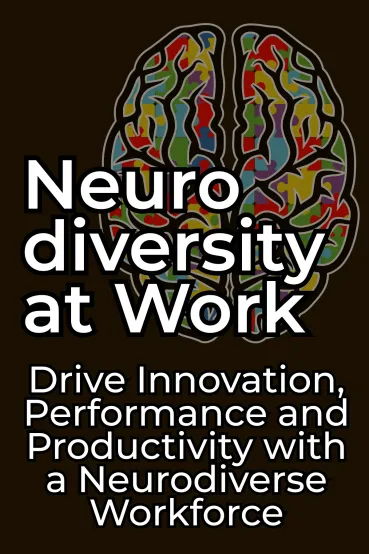
Neurodiversity at Work
Brief Summary
“Neurodiversity at Work” by Theo Smith and Amanda Kirby explains what neurodiversity is and why it matters in modern business culture. Are you a neurodivergent or “neurotypical” person? After reading the book, you will be able to apply this concept to building a unique work team that would be strong in all aspects of work.
Key points
Key idea 1 of 7
In today's society, inclusivity is vital, encompassing the representation of diverse views, ideas, and experiences. This fosters a broader understanding of perspectives and ensures that no voices are left unheard. Despite this importance, many sectors, including education and business, still lack neurodiverse representation, hindering progress and perpetuating narrow viewpoints.
Efforts toward inclusivity have been made, with some companies addressing diversity through initiatives like LGBTQ+ and BAME inclusion. However, neurodiversity remains largely overlooked, resulting in a lack of opportunities for neurodivergent individuals to advance, especially to top positions. The absence of diverse perspectives limits innovation and narrows the scope of decision-making.
While campaigns for gender equality are crucial, a more holistic approach that considers intersectionality is needed. Each individual brings unique skills and experiences to the table, and understanding these nuances is essential for creating inclusive environments. However, societal biases and systemic discrimination continue to exclude certain groups.
Businesses play a significant role in promoting inclusivity, both ethically and legally. Legislation such as the Equality Act in the UK and similar laws globally aim to prevent discrimination and promote equal treatment. Despite legal frameworks, progress toward inclusivity has been slow, with many organizations failing to translate theoretical support into tangible actions.
Attracting and retaining diverse talent is crucial for organizational success. However, traditional hiring practices often overlook neurodiverse individuals, leading to missed opportunities for both employers and employees. Inclusive job descriptions, accessible application processes, and supportive environments can attract diverse talent and improve retention rates.
Moreover, embracing neurodiversity isn't just morally right. It's also financially beneficial. Studies have shown that diversity correlates with better financial performance, highlighting the importance of diversity of thought in driving innovation and success. By embracing neurodiversity, organizations can tap into talent pools and foster environments where all individuals can thrive.
FAQ
You may also like these summaries











